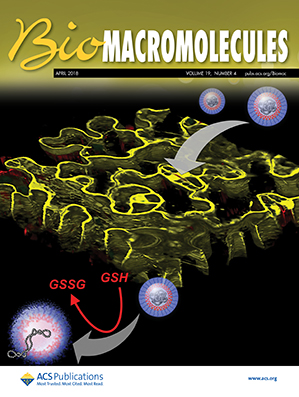Revitalizing Antibiotics with Macromolecular Engineering: Tackling Gram-Negative Superbugs and Mixed Species Bacterial Biofilm Infections In Vivo
IF 5.4
2区 化学
Q1 BIOCHEMISTRY & MOLECULAR BIOLOGY
引用次数: 0
Abstract
The escalating prevalence of multidrug-resistant Gram-negative pathogens, coupled with dwindling antibiotic development, has created a critical void in the clinical pipeline. This alarming issue is exacerbated by the formation of biofilms by these superbugs and their frequent coexistence in mixed-species biofilms, conferring extreme antibiotic tolerance. Herein, we present an amphiphilic cationic macromolecule, ACM-AHex, as an innovative antibiotic adjuvant to rejuvenate and repurpose resistant antibiotics, for instance, rifampicin, fusidic acid, erythromycin, and chloramphenicol. ACM-AHex mildly perturbs the bacterial membrane, enhancing antibiotic permeability, hampers efflux machinery, and produces reactive oxygen species, resulting in a remarkable 64–1024-fold potentiation in antibacterial activity. The macromolecule reduces bacterial virulence and macromolecule-drug cocktail significantly eradicate both mono- and multispecies bacterial biofilms, achieving >99.9% bacterial reduction in the murine biofilm infection model. Demonstrating potent biocompatibility across multiple administration routes, ACM-AHex offers a promising strategy to restore obsolete antibiotics and combat recalcitrant Gram-negative biofilm-associated infections, advocating for further clinical evaluation as a next-generation macromolecular antibiotic adjuvant.
- Download: Download high-res image (107KB)
- Download: Download full-size image
用大分子工程重振抗生素:处理体内革兰氏阴性超级细菌和混合种细菌生物膜感染。
多重耐药革兰氏阴性病原体的日益流行,加上抗生素开发的减少,在临床管道中造成了一个关键的空白。这些超级细菌形成的生物膜及其在混合物种生物膜中的频繁共存加剧了这一令人担忧的问题,从而赋予了极端的抗生素耐受性。在此,我们提出了一种两亲性阳离子大分子,ACM-AHex,作为一种创新的抗生素佐剂,以恢复和重新利用耐药抗生素,如利福平,福西地酸,红霉素和氯霉素。ACM-AHex轻度扰乱细菌膜,增强抗生素的渗透性,阻碍外排机制,并产生活性氧,导致抗菌活性显着增强64-1024倍。大分子降低了细菌的毒力,大分子-药物混合物显著根除了单种和多种细菌生物膜,在小鼠生物膜感染模型中实现了99.9%的细菌减少。ACM-AHex显示出跨多种给药途径的强大生物相容性,为恢复过时的抗生素和对抗顽固性革兰氏阴性生物膜相关感染提供了有希望的策略,倡导作为下一代大分子抗生素佐剂的进一步临床评估。
本文章由计算机程序翻译,如有差异,请以英文原文为准。
求助全文
约1分钟内获得全文
求助全文
来源期刊

Biomacromolecules
化学-高分子科学
CiteScore
10.60
自引率
4.80%
发文量
417
审稿时长
1.6 months
期刊介绍:
Biomacromolecules is a leading forum for the dissemination of cutting-edge research at the interface of polymer science and biology. Submissions to Biomacromolecules should contain strong elements of innovation in terms of macromolecular design, synthesis and characterization, or in the application of polymer materials to biology and medicine.
Topics covered by Biomacromolecules include, but are not exclusively limited to: sustainable polymers, polymers based on natural and renewable resources, degradable polymers, polymer conjugates, polymeric drugs, polymers in biocatalysis, biomacromolecular assembly, biomimetic polymers, polymer-biomineral hybrids, biomimetic-polymer processing, polymer recycling, bioactive polymer surfaces, original polymer design for biomedical applications such as immunotherapy, drug delivery, gene delivery, antimicrobial applications, diagnostic imaging and biosensing, polymers in tissue engineering and regenerative medicine, polymeric scaffolds and hydrogels for cell culture and delivery.
 求助内容:
求助内容: 应助结果提醒方式:
应助结果提醒方式:


